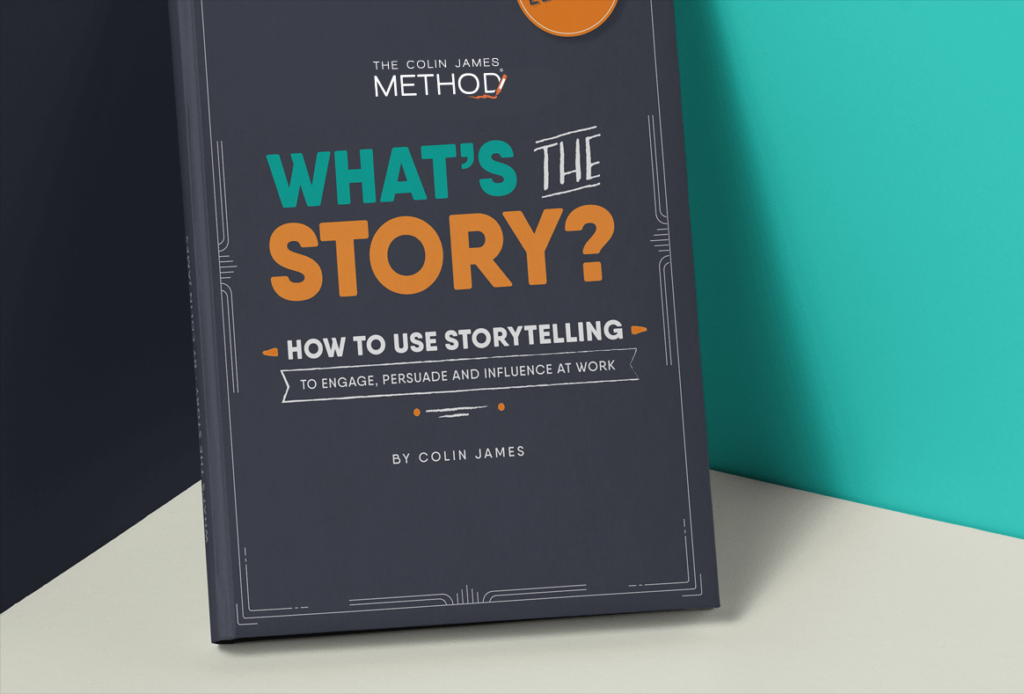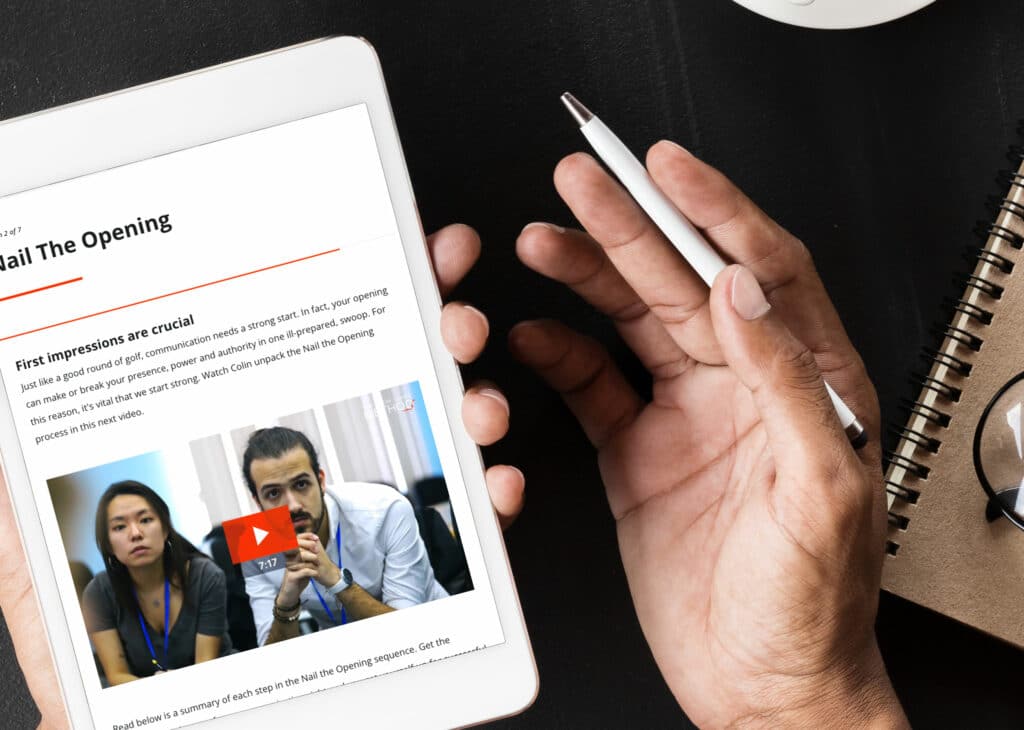Summary
- Mastering effective communication is crucial for unlocking opportunities and building connections.
- Four fundamental types of communication: Verbal, Non-Verbal, Written, and Visual.
- Verbal communication is the exchange of spoken words and is essential for everyday life.
- Non-verbal communication includes facial expressions, body movement, gestures, eye contact, touch, space, pitch, and tone.
- Written communication involves the exchange of information through written words and is structured and permanent
- Visual communication relies on images, symbols, and graphics to convey messages.
- The choice of communication type depends on the context, audience, purpose, and message to be conveyed.
- Combining different types of communication can enhance the overall impact of a message.
- Each type has its strengths and weaknesses.
Introduction
Mastering the art of communication is a complex skill. Over the years I’ve learnt that the ability to convey your thoughts, feelings and ideas concisely and with impact has the power to unlock doors, build connections and shape personal and professional lives.
Throughout my career, I’ve explored the vast landscape of communication. But concept and theory about communication ultimately comes back to these four fundamental types of communication. Each with their own unique language and power. They are the pillars upon which all meaningful human exchanges stand. They are:
-
-
- 🗣️ Verbal
- 🤝 Non-Verbal
- 📝 Written
- 📊 Visual
-
In this blog post, I invite you to embark on a journey with me that will empower you to make your message crystal clear. We will dissect these four types of communication, unravel their secrets, and equip you with the knowledge and tools to harness their immense potential.
Whether you’re striving to become a persuasive leader, a captivating speaker, a compelling writer, or a masterful communicator in any realm of life, understanding and mastering these four key types of communication will be your guiding star. So, join me as we embark on this transformative expedition, and together, we will illuminate the path to making your message resonate and inspire in ways you’ve never imagined.
Which communication type is best?
As noted, there are various types of communication, but is there one that rules them all, or is one better than the rest?
Let’s explore each in more detail.
01: 🗣️ Verbal Communication
Definition
Verbal communication is the exchange of ideas and information through spoken words. It is the foundation of human interaction, enabling individuals to express thoughts, emotions, and concepts effectively and promptly. This mode of communication is essential in everyday life, playing a crucial role in fostering collaboration and cultivating relationships, particularly in professional settings.
📓 Further Reading: Elevate Your Verbal Communication From The Mundane To The Sublime
Examples
Interpersonal
Interpersonal communication is how we talk and interact with one another on a one-on-one basis. It’s all about the communication between individuals. When you have a conversation with a friend, speak to a family member, or chat with a coworker, you are engaged in interpersonal communication.
Intrapersonal
Intrapersonal communication is the communication we have with ourselves inside our own minds. It’s the way we think, reflect, and process information internally. When you silently ask yourself questions like, “What should I wear today?” or when you mentally plan your day, you’re using intrapersonal communication.
Group Communication
Group communication is when a small to medium-sized group of people talk and interact together. It’s about how individuals communicate within a group setting. A team meeting at work, a study group working on a project, or a group of friends planning a weekend getaway all involve group communication.
Public Communication
Public communication is when one person addresses a larger audience. It’s typically a one-to-many communication style, often in a public speaking or presentation format. A leader hosting a quarterly division update, a politician making a speech to voters, or a keynote speaker addressing a conference audience are all instances of public communication.
Mass Communication
Mass communication involves reaching a very large and often diverse audience through various channels, such as television, radio, newspapers, or social media. It’s about delivering messages to a broad public. A news anchor reporting the day’s headlines on TV, a radio talk show broadcasted to millions of listeners, or a viral video on social media are forms of mass communication.
Strengths & Weaknesses
Strengths:
- Clarity and Precision: Verbal communication can be highly specific and clear. When done effectively, it leaves little room for misinterpretation, as you can articulate your thoughts precisely.
- Immediate Feedback: It allows for real-time interaction and immediate feedback. You can gauge the other person’s reactions through their tone, body language, and verbal responses, which enables you to adjust your message as needed.
- Emotional Expression: Verbal communication allows for the expression of emotions and feelings. You can convey enthusiasm, empathy, or concern through the tone and choice of words you use.
- Nuanced Communication: It enables you to convey complex ideas, concepts, and emotions that may be challenging to express through written or non-verbal means alone.
- Interactive Nature: Verbal communication fosters engagement and two-way dialogue, promoting active participation in conversations and discussions.
Weaknesses:
- Misunderstanding: Verbal communication can be prone to misunderstanding due to various factors such as differing interpretations of words, accents, and language barriers.
- Lack of Permanent Record: Verbal conversations often lack a permanent record, making it difficult to refer back to the details of a discussion unless they are documented separately.
- Non-Verbal Cues: While verbal communication is powerful, it can be incomplete when crucial non-verbal cues (such as facial expressions and body language) are absent or misread.
- Inability to Edit: Unlike written communication, spoken words cannot be easily edited or revised once they are expressed. This can lead to unintentional mistakes or misstatements.
- Limited Reach: Verbal communication is limited by physical proximity and auditory capabilities. It may not be effective for communicating with individuals who have hearing impairments or when participants are geographically distant.
- Emotional Intensity: While it can convey emotions, verbal communication can also escalate conflicts when emotions run high, leading to heated arguments or misunderstandings.
When to use
Verbal communication is ideal for face-to-face interactions, team meetings, brainstorming sessions, and situations that require immediate feedback and emotional connection.
02: 🤝 Non-Verbal Communication
Definition
Non-verbal communication encompasses aspects of communication other than spoken or written words. It includes elements such as tone, pitch, and body language, which significantly influence how messages are perceived.
Examples
Facial Expressions
The human species possesses remarkable expressiveness, adept at conveying a multitude of emotions without the need for verbal articulation. Notably, unlike certain other nonverbal modes of communication, facial expressions exhibit universality. Across diverse cultures, the conveyance of emotions such as happiness, sadness, anger, surprise, fear, and disgust remains consistent through identical facial expressions.
Body Movement and Posture
Reflect upon the impact that individuals’ sitting, walking, standing, or head positioning has on your perceptions of them. Your movements and overall demeanor serve as a conduit of information that communicates extensively to the external world. This realm of nonverbal communication encompasses elements such as posture, carriage, stance, and the nuanced gestures and motions you employ.
📓 Further Reading
- The Right Pose: How Owning Your Body Language Makes You The Most Powerful Person In The Room
- Body Language In Communication: Be Heard And Block The Interrupters
Gestures
Gestures are pervasive in our everyday. You might wave, point, beckon or mime when quarrelling or speaking with animation, not necessarily premeditating. However, the meaning of some gestures may differ drastically between cultures. For instance, the ‘OK’ gesture with the hand usually indicates a positive message in English-speaking nations, but is seen as a provocation in nations such as Germany, Russia and Brazil. Consequently, one must be mindful in their use of gesticulation to evade misinterpretation.
Eye Contact
Since the visual sense predominates for many, eye contact is an especially crucial form of non-verbal communication. How one regards somebody can convey numerous things, including interest, love, animosity, or attraction. It is also significant for upholding the progression of the conversation and appraising the other individual’s interest and response.
Touch
We transfer a great deal of information and feeling through touch. A weak handshake that signals a lack of enthusiasm or determination, a comforting embrace that conveys reassurance, a dismissive pat on the head meant to belittle, and an aggressive grip on the arm that is given with the intention of intimidation are just a few examples. It is amazing to think that so much can be communicated through such subtle physical contact.
Space
Ever felt awkward in a conversation when someone was standing too near? Everyone needs their personal space, however that desire varies as per culture, circumstance and closeness of the relationship. Physical space can be used to portray a variety of non-verbal messages, from signs of intimacy and fondness to aggression or dominance.
Pitch
The pitch of your voice can convey a wide range of emotions and intentions. Imagine a training facilitator explaining a complex concept to a group of students. When the facilitator raises their voice to a higher pitch to express excitement about the topic, it instantly captures the students’ attention and conveys enthusiasm. In contrast, a monotone or low-pitched delivery may come across as disinterested or uninspiring.
📓 Further Reading: How To Find Your 6ft VoiceTone
Tone
The tone in which words are spoken can drastically alter their meaning. Consider the simple phrase, “I’m fine.” Depending on the tone, it can express contentment, frustration, or even resentment. A cheerful tone communicates positivity, while a sarcastic tone implies irony or mockery. Therefore, it’s crucial to pay attention not just to the words spoken but also to how they are delivered.
Strengths & Weaknesses
Strengths:
- Universal Understanding: Non-verbal cues are often universally understood to some extent. For example, a smile typically signifies happiness across different cultures.
- Emotional Expression: Non-verbal communication is highly effective at conveying emotions, feelings, and attitudes, even when words may fail to do so adequately.
- Complement to Verbal Communication: It can enhance and complement verbal communication, adding depth and context to spoken words.
- Quick and Efficient: Non-verbal cues can convey messages swiftly, often faster than verbal communication, which can be particularly useful in situations requiring immediate responses.
- Subtle Messages: It allows for the transmission of subtle or discreet messages that might be inappropriate or unclear if communicated verbally.
- Non-Discrimination: Unlike language barriers that can occur in verbal communication, non-verbal cues are less likely to be affected by linguistic differences.
Weaknesses:
- Subjectivity: Interpretation of non-verbal cues can vary widely from person to person and culture to culture, leading to potential misunderstandings.
- Ambiguity: Non-verbal cues can be ambiguous. For example, a person’s crossed arms might indicate defensiveness or simply that they are feeling cold.
- Lack of Clarity: Non-verbal communication alone may lack the clarity needed to convey complex or detailed information effectively.
- Incomplete Communication: Non-verbal cues do not provide a complete message and often need to be supplemented with verbal communication to ensure full understanding.
- Context Dependency: The meaning of non-verbal cues can be heavily influenced by the context in which they occur. A gesture or expression may have different interpretations in different situations.
- Limited for Remote Communication: Non-verbal cues are challenging to use effectively in remote or written communication, such as emails or texts, where the visual and auditory aspects are absent.
- Control and Intention: People may not always have full control over their non-verbal cues, and these cues may sometimes reveal information unintentionally.
When to use
Non-verbal communication is essential when conveying emotions, emphasising points, and influencing how your message is received. It is particularly crucial in negotiations, presentations, and public speaking.
03: 📝 Written Communication
Definition
Written communication involves the exchange of ideas and information through written words. It is a structured and permanent form of communication, often used in formal and professional settings.
Examples
Email is one of the most prevalent forms of written communication in the modern world. It’s used for personal communication, business correspondence, and various professional purposes.
Text Messages
Short message service (SMS) and instant messaging apps are widely used for quick and informal written communication, especially for personal conversations.
Social Media Posts
Social media platforms like Facebook, Twitter, Instagram, and LinkedIn involve written communication through status updates, posts, comments, and direct messages.
Reports
Written reports are essential for documenting and presenting information, findings, and analysis in both business and academic settings.
Memos
Memos, or memorandums, are used within organizations for internal written communication, conveying announcements, directives, or information to employees.
Strengths & Weaknesses
Strengths:
- Clarity and Precision: Written communication allows for precise and unambiguous expression of ideas. You can carefully choose words and structure sentences to convey complex information clearly.
- Permanent Record: Written documents serve as a permanent record of information, making it easy to refer back to, archive, and share with others. This is especially valuable in legal, academic, and business contexts.
- Structured Expression: Written communication often follows a structured format, such as essays, reports, or emails, making it easier to organise and present information logically.
- Distributed Communication: Written messages can be disseminated to a large and geographically dispersed audience through various means, including email, social media, and printed materials.
- Thoughtful Editing: Unlike verbal communication, written messages can be edited and revised before being shared, reducing the likelihood of errors or miscommunication.
Weaknesses:
- Lack of Immediate Feedback: Written communication lacks the immediacy of verbal interaction. There is no opportunity for immediate clarification or response, which can lead to misunderstandings.
- Limited Expression of Emotion: Written communication can struggle to convey emotions effectively, as it relies solely on words and lacks the emotional cues present in spoken or non-verbal communication.
- Language Barriers: Language differences and nuances can hinder effective written communication, particularly when dealing with a diverse or international audience.
- Time-Consuming: Composing written documents can be time-consuming, especially for lengthy or complex messages. This can delay communication compared to verbal methods.
- Accessibility: Written communication may not be accessible to individuals with visual impairments, literacy issues, or limited access to written materials.
- Loss of Non-Verbal Context: Written communication does not capture non-verbal cues, such as tone of voice or body language, which can lead to misinterpretation or a lack of context.
- Information Overload: In today’s digital age, people are inundated with written information, leading to information overload. This can make it challenging to ensure your message stands out and is read and understood.
When to use
Written communication is ideal for formal reports, documentation, emails, and any situation where a permanent record is essential.
04: 📊Visual Communication
Definition
Visual communication relies on images, symbols, and graphics to convey messages. It is a powerful tool in sales, marketing, design, and data representation.
Examples
Infographics
Infographics are an excellent example of how visual communication simplifies complex data. Let’s say you want to convey statistical information about a company’s growth over the past year. Using charts, graphs, and icons, you can create an infographic that instantly communicates key trends, making it accessible and engaging for a wide audience.
Charts and Graphs
When presenting statistical data, charts and graphs are indispensable. A bar chart can visually compare sales figures across different months, while a pie chart can illustrate the distribution of expenses in a budget report. These visual representations allow viewers to grasp information quickly and make informed decisions.
Strengths & Weaknesses
Strengths:
- Universal Understanding: Visuals can transcend language barriers, making them universally understandable. A well-designed image or symbol can convey a message to people from diverse linguistic backgrounds.
- Enhanced Retention: Visuals are often more memorable than text or spoken words. People tend to retain information better when it’s presented in a visual format, aiding in learning and comprehension.
- Clarity and Simplicity: Visuals can simplify complex information, making it easier to understand. Infographics, for example, distill intricate data into easily digestible formats.
- Emotional Impact: Visuals can evoke emotions effectively. A compelling image or video can trigger strong emotional responses and engagement, which is valuable in marketing and storytelling.
- Concise Communication: Visuals allow for concise and direct communication. They can convey a message quickly, reducing the need for lengthy explanations.
- Enhanced Persuasion: Visuals can be persuasive tools. In advertisements, for instance, appealing visuals can influence consumer choices and behavior.
Weaknesses:
- Subjectivity: Interpretation of visual elements can be subjective. What one person sees or feels when looking at an image may differ from another’s interpretation, leading to potential misunderstandings.
- Limited Detail: Visuals may lack the depth of detail that text or verbal communication can provide. Complex ideas or extensive information may not be fully communicated through visuals alone.
- Accessibility Issues: Visual communication may not be accessible to everyone. Individuals with visual impairments may have difficulty accessing and understanding visual content.
- Dependence on Context: Visuals often rely on context to convey meaning. Without proper context, an image or visual element may be misinterpreted or lose its intended message.
- Time-Consuming Creation: Producing high-quality visuals can be time-consuming and require specialised skills and tools, which may not always be readily available.
- Over Reliance on Aesthetics: Overemphasis on aesthetics in visual communication can sometimes detract from the accuracy or effectiveness of the message. Style may overshadow substance.
- Limited for Certain Content: Visual communication may not be suitable for conveying highly technical or scientific information, which often requires detailed textual or verbal explanations.
When to use
Visual communication is effective in presentations, sales pitches, data analysis, and any other situations where information needs to be conveyed rapidly and memorably.
Final Thoughts
The art of communication is a skill that can be refined and enriched by comprehending the diverse avenues of expression at our disposal. Whether you choose to convey your message through verbal eloquence, the subtlety of non-verbal cues, the precision of the written word, or the impact of visual elements, gaining mastery over these varied forms of communication will equip you to establish connections, wield influence, and triumph in both your personal and professional endeavors.
So, the next time you embark on a communication journey, take a moment to reflect on the most fitting mode that aligns with your purpose. Embrace it as a tool of empowerment, and utilise its inherent strength to propel yourself towards your desired goals.
Frequently Asked Questions
How to improve your communication skills?
Take a course! And we happen to know a good one 😉
Unlock your communication skills with the Colin James Method “Mastering Communications Online” course. This course offers a unique and transformative learning experience that provides a practical, hands-on approach, which bridges the gap between theory and real-world application – all in a online classroom setting! You’ll gain invaluable skills in public speaking, active listening, and persuasive communication, in a supportive, non-intimidating environment. Taught by renowned communication expert Colin James himself, this course provides unparalleled insights and techniques that will boost your confidence and ability to convey your thoughts and ideas clearly. Enroll here.
What are the 4 main types of communication?
- Verbal
- Non-Verbal
- Written
- Visual
Why Do Types of Communication Matter?
Communication plays an essential role in our lives and is crucial to maintaining healthy relationships both in the workplace and with our loved ones. Different types of communication such as verbal, non-verbal, written and visual are all useful in different ways.
It is important to understand the different types of communication and how to use them effectively to ensure that information is accurately relayed and properly received. Being able to select the most effective type of communication for any given situation is essential for successful communication in all areas of our lives.
Which Type of Communication Works Best?
The effectiveness of a particular type of communication depends on various factors, including the context, audience, purpose, and the specific message being conveyed. Sorry to tell you, but there is no single “best” type of communication, as each has its own strengths and weaknesses.
The choice of communication type depends on your objectives and the specific circumstances. Often, the most effective communication strategy involves a combination of these types to ensure that your message is clear, engaging, and tailored to your audience’s preferences and needs. Ultimately, the “best” type of communication is the one that aligns most closely with your goals and effectively reaches your intended audience.
How do they add to the overall message?
Each of the four communication types—verbal, non-verbal, written, and visual—contributes to the overall message in unique ways. When combined effectively, they enhance the comprehensibility, impact, and depth of your communication:
- Verbal Communication:
- Adds: Verbal communication provides the core content of your message. It conveys the actual words and information you intend to share.
- Enhances: Verbal communication enhances the message by conveying tone, emotion, and emphasis through variations in speech, intonation, and pacing. It allows for immediate interaction and feedback, which can clarify and reinforce the message.
- Non-Verbal Communication:
- Adds: Non-verbal communication supplements the message by providing context and emotional cues. It includes body language, facial expressions, gestures, and eye contact.
- Enhances: Non-verbal cues enhance the message by helping the recipient interpret the speaker’s emotions, intentions, and attitude. They can clarify ambiguity, emphasise important points, and engage the audience.
- Written Communication:
- Adds: Written communication delivers the message through the written word, providing a clear and permanent record of information.
- Enhances: Written communication enhances the message by offering precision, organisation, and the ability to convey complex ideas. It also allows for careful editing and revising to ensure clarity.
- Visual Communication:
- Adds: Visual communication presents information through images, graphics, charts, and other visual elements.
- Enhances: Visual communication enhances the message by making it more engaging, memorable, and accessible. It simplifies complex data, aids in retention, and adds a visual context that complements verbal and written content.
By leveraging the strengths of each communication type and ensuring they align cohesively, you can convey a message that is not only clear but also resonates with your audience on multiple levels, making it more effective and memorable.










